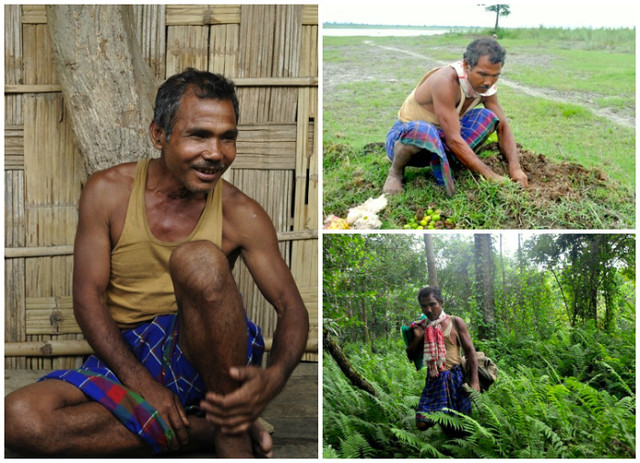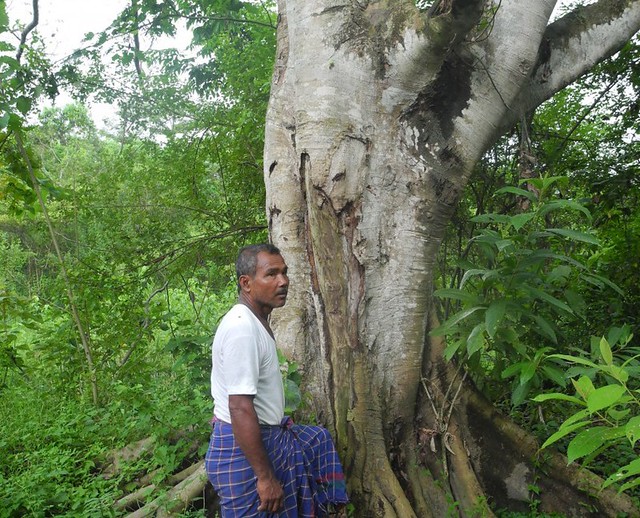By Dr. Syed Ahmed, for TwoCircles.net,
Imphal: A documentary film on the life of Jadav Payeng, the man who single-handedly created a forest on the Brahmaputra sandbar in Jorhat won award at Cannes.
The 23 minute long documentary film, titled Forest Man, won the best documentary at the American Pavilion at the Cannes Film Festival 2014. The American Pavilion is the platform which gives opportunities to young and emerging filmmakers to showcase their talent at the film festival.

Jadav Payeng
William Douglas McMaster is the Director of the documentary, while Mike Ritchie its Sound Engineer. Both are from Canada.
Payeng was informed about the award by McMaster and R.T. Srinivas, a director from Mumbai who had also made a documentary of Payeng on May 25. Hearing the news Payeng expressed to the media that he is happy that the film has taken his message of conservation of the environment to the people of the world. “I am very happy that the film has won an award. But I am more happy that this has been viewed by a global audience and that McMaster has taken my message of conservation of the environment to the world,” Payeng said.
McMaster came to know Payeng through Bijit Dutta, a youth from Jorhat, through his travel blog. Douglas McMaster came to Jorhat with a friend and stayed for a month to make the small-budget film in October 2012.
McMaster had expressed in the media earlier that he had made the documentary to tell a positive story and the incredible achievement of Payeng is the story that he would like to tell to the world. The story focused on the feat of Payeng in the face of all the destruction caused by floods and erosion and creating a forest of around 1,400 acres of land on his own. “We wanted to tell a positive story – a story about someone who has taken matters into their own hands. We showed that though Payeng lives a simple life, he still made a big difference in the world. Also, we examine Payeng’s ideas on how to stop erosion along the Brahmaputra through plantation, and how frustrating it is that no one in the government has adopted the idea,” he said.
“From the moment I met him I could sense his charisma, intelligence, and positive energy. He was extremely hospitable to us, welcoming us into his home and showing us his forest. In fact, everyone we met in the Jorhat area was extremely kind and helpful to us in making this film. We did not expect this. I can honestly say that the people in Jorhat are some of the nicest people I have ever met,” McMaster added.
Jadav Payeng has single-handedly planted nearly 1,400 acres of forest located near Kokilamukh of Jorhat. The forest is now known as Molai Kathonibari.
In 1979, Payeng, who was than 16, came across a large number of reptiles that had died after floods washed them onto the tree-less Brahmaputra sandbar. He was shocked to see the carnage. Recollecting the event he said in one his interview, “The snakes died in the heat, without any tree cover. I sat down and wept over their lifeless forms. It was carnage. I alerted the forest department and asked them if they could grow trees there. They said nothing would grow there. Instead, they asked me to try growing bamboo. It was painful, but I did it. There was nobody to help me. Nobody was interested.” Then he started planting trees in the Brahmaputra sandbar.

Jadav Payeng in his forest.
Today the forest of Payeng has royal Bengal tiger, rhinoceros, and elephants, besides numerous other animals. Migratory birds also come regularly. The Government authorities came to know of the efforts of Payeng in 2008.
Payeng has been honored for his achievement by Jawaharlal Nehru University (JNU) in 2012. JNU Vice-Chancellor Sudhir Kumar Sopory named Payeng as “Forest Man of India.” In 2013, he was honored at Indian Institute of Forest Management during their annual event Coalescence.
Jitu Kalita made a documentary film, The Molai Forest, on the achievement of Payeng in 2012, which was screened at JNU. Aarti Shrivastava’s Foresting Life (2013) also featured Payeng and his forest.
Payeng, who belongs to the Mishing tribe, lives in a small hut in the forest along with his wife, Binita, and his 2 sons and a daughter. He has cattle and buffalo on his farm and sells the milk for his livelihood.
